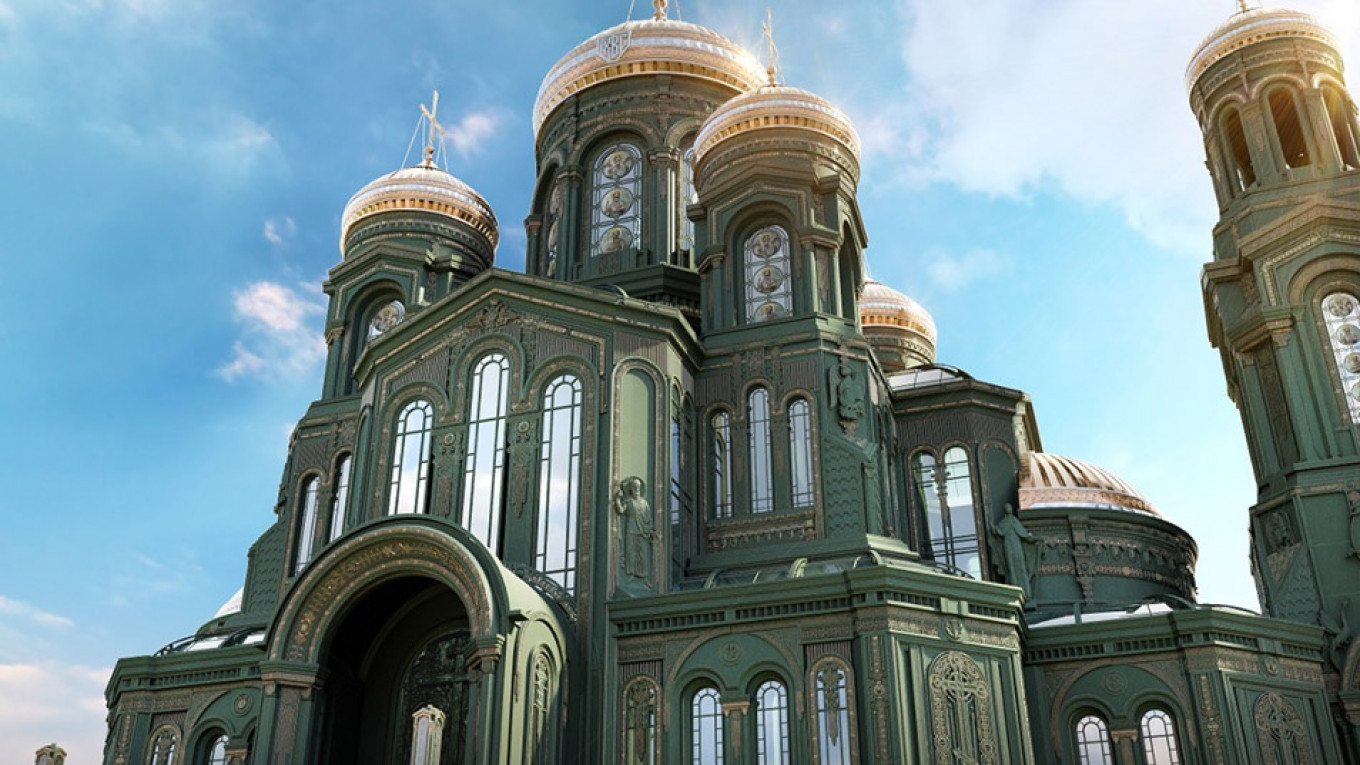Architects: Showcase your next project through Architizer and sign up for our inspirational newsletter.
“They don’t make them like they used to,” people are known to say when visiting historic cathedrals. They should hasten to add “except in Russia.”
The Russian Revival style of architecture, which combines historical details with modern building materials and techniques, remains popular in Russia. In fact, one of the largest and most ambitious buildings ever created in this style was opened last year.
The Main Cathedral of the Russian Armed Forces is dedicated to the 75th anniversary of the Red Army’s Victory in the Great Patriotic War, which is what Russians call World War II. In addition to being a place of worship for practitioners of the Russian Orthodox faith, the cathedral is a monument to Russian military might, both in World War II and in all other historical conflicts where Russian armies prevailed.
It is located in a complex called Patriot Park in the Odintsovsky District, about 34 miles west of Moscow. According to the cathedral’s official website, “the church was designed in a monumental Russian style, organically incorporating modern architectural approaches and innovations unique to the Orthodox Church creations.”
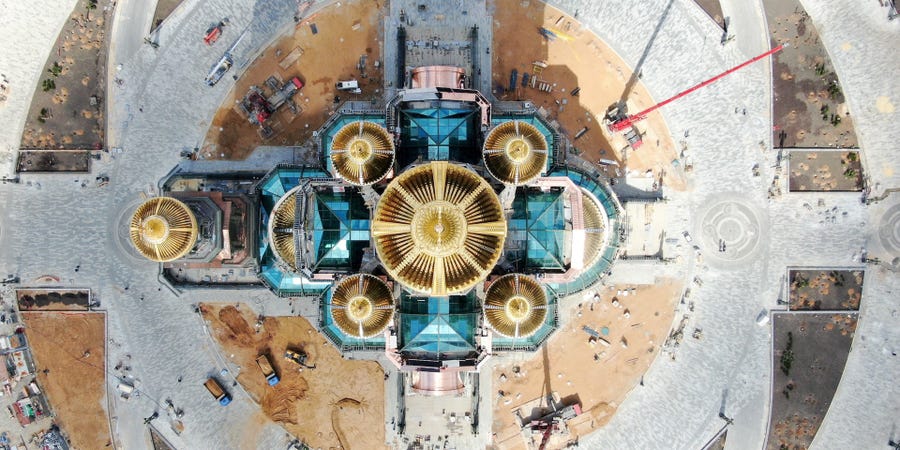
Aerial view of the cathedral under construction, April 2020. The six golden domes represent different branches of the armed forces. Photo: Denis Voronin/Moscow News Agency/Handout via Reuters
At 95 meters in height and 79 meters in length, the Military Cathedral is one of the largest Orthodox churches in Russia. The Saviour-Not-Made-by-Hands icon that looks down from the central dome is the largest image of Christ’s face ever created in mosaic.
Clearly, the church was built with the intention that it would stand alongside St. Basil’s and other important Orthodox cathedrals as a significant Russian landmark. When the project was announced, in 2018, Russian President Vladimir Putin said it would be “one more symbol of the indestructibility of our national traditions, of our loyalty to the memory of our forefathers and their achievements,” according to a report in the Times of London.
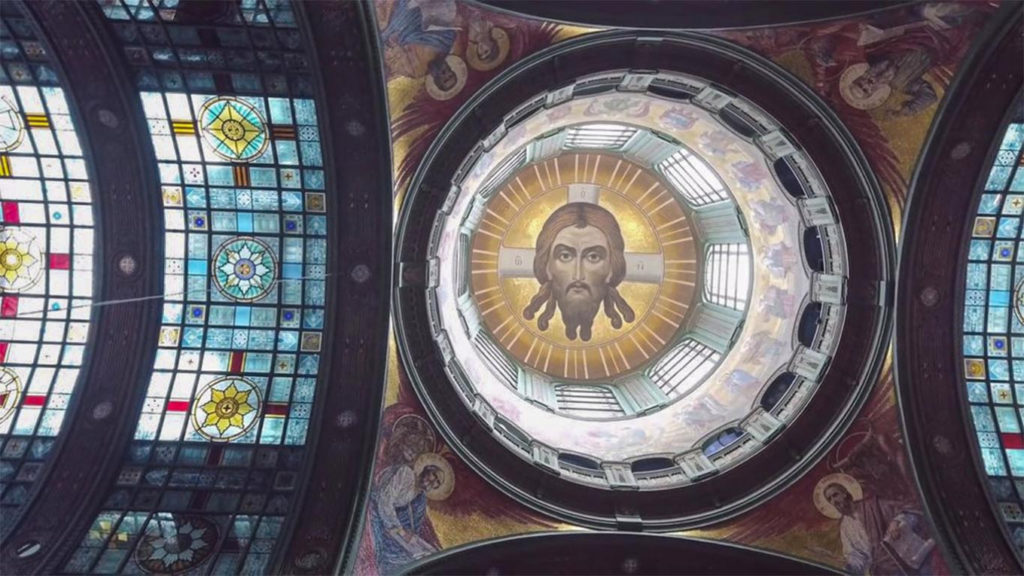
The image of the Saviour-Not-Made-by-Hands that looks down from the central dome is the largest image of Christ’s face ever created in mosaic. Photo courtesy of the Moscow Times
The modern elements of the cathedral include a façade that is totally clad in metal and enormous glazed arches that allow natural light to pour in from above. But these items are integrated into an overall aesthetic that is uncompromisingly traditional.
One thing that separates this cathedral from those of past centuries was the length of its construction. Despite the intricacy of its detailing, the cathedral was built in just 18 months. Funding for the project came from both private donations and public funds from the city of Moscow and the surrounding region of the Moscow Oblast. Overall, it is said to have cost 82 million USD.
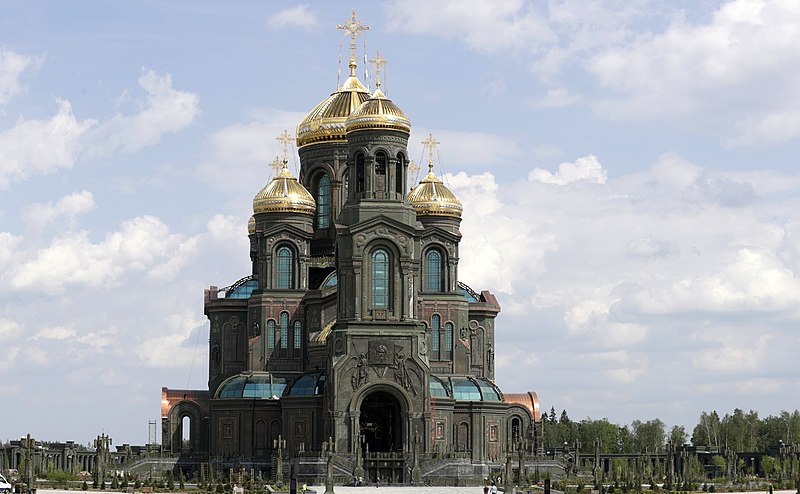
The exterior of the building is clad in metal, and glazed arches allow sunlight to pour in from above. Image via Wikipedia.
The dimensions of the church are symbolic. The diameter of the drum of the main dome is 19.45 meters, symbolizing the final year of World War II, 1945. The belfry is 75 meters heigh, representing the 75 years that have passed between 1945 and 2020, the year of the church’s consecration. And finally, the height of the small dome is 14.18 meters, reflecting the 1,418 days and nights that the conflict lasted. The steps to the cathedral are rumored to be clad in metal sourced from melted-down Nazi tanks.
The cathedral’s combination of religious and patriotic sentiment is itself a throwback, as the great Catholic and Orthodox cathedrals of past centuries were also built to glorify the wealth and power of the state. The walls of the church are decorated with stained glass mosaics that illustrate scenes from both scripture and Russian history, including those of the Red Army’s victory over the Nazis.
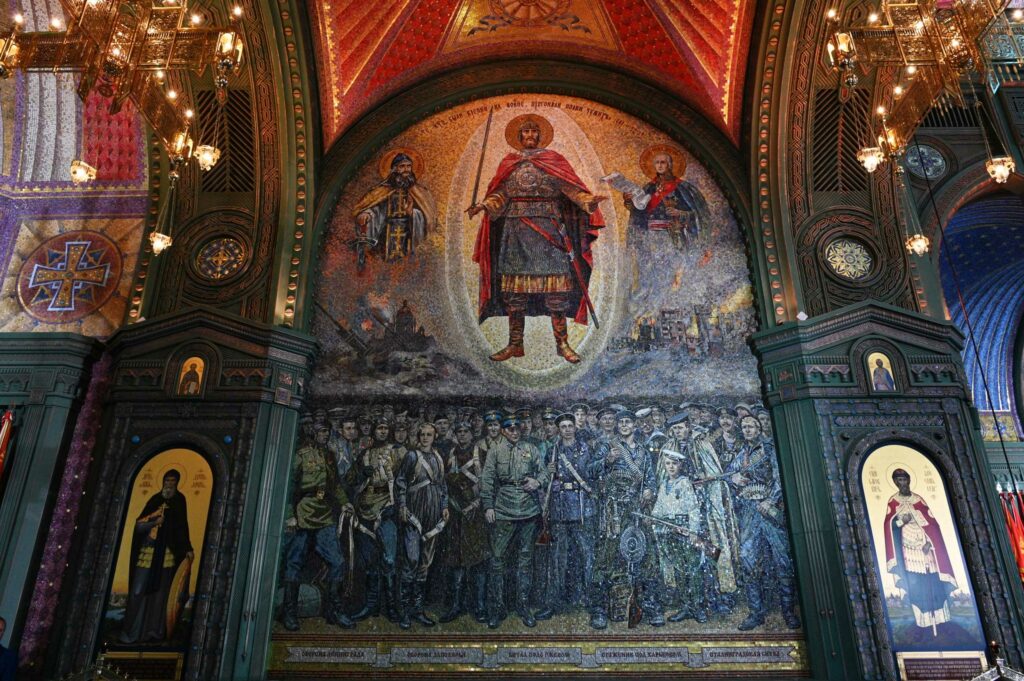
Interior mosaics feature both scenes from scripture and Russian military history. Photo courtesy of patriarchia.ru/
One wing of the cathedral is dedicated to a museum-style exhibition that traces the history of the Russian state and its armed forces. In April 2020, two months before its consecration, the cathedral made international headlines when photos leaked of mosaics that appeared to celebrate Russia’s 2014 annexation of Crimea. These murals featured an image of Putin, bringing the cathedral’s celebration of Russian history right up to the present.
The Russian government at first defended these murals, which sparked outrage around the world, but later decided to remove them. According to a spokesperson from the Kremlin, it was Putin himself who recommended the removal. “Someday our thankful descendants will appreciate our merits, but it’s too early to do so now,” the Russian president is said to have remarked.
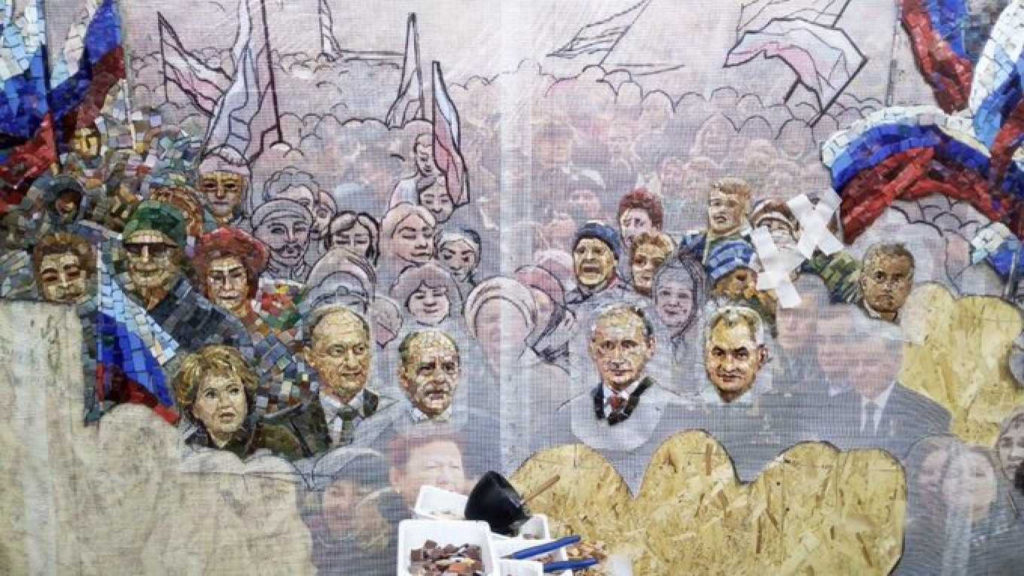
A mosaic featuring Putin that celebrated the Russian annexation of Crimea was removed before the cathedral opened. Photo courtesy of the Moscow Times
Whether or not Putin’s likeness is displayed inside the cathedral, the church embodies his vision of the Russian nation. Some may find it ironic to celebrate the Red Army in a church, given that religion was repressed during the Soviet era.
But for Putin and other leaders who position themselves as the guardians of national traditions, the accuracy of a given historical account is less important than its political utility. From the standpoint of bolstering Russian national pride, synthesizing the grand legacy of Orthodox church architecture with the military accomplishments of the Soviet Union makes perfect sense.
Architects: Showcase your next project through Architizer and sign up for our inspirational newsletter.
